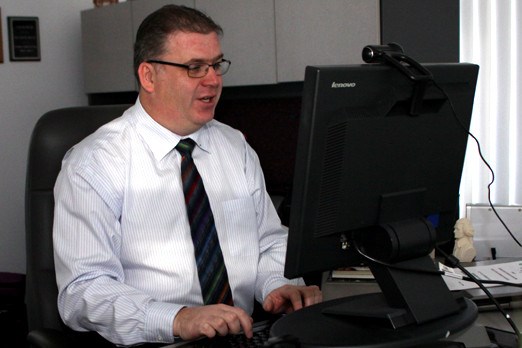The area’s EMS and regional hospital have taken a page from the Toronto playbook to cut down on wait times often experienced during a patient’s transfer.
Officials with the Superior North Emergency Medical Services and the Thunder Bay Regional Health Sciences Centre created a registered nurse position within the hospital to relieve the pressure from arriving paramedics transferring patients.
The position, which is provincially funded with $70,000 until March 31, will provide nurses with eight hours of work, seven days a week during periods of high volume traffic.
Chief of the Superior North EMS, Norm Gale, said having a registered nurse to work with paramedics will reduce the demand on other nurses and paramedics.
It’s a strategy that’s been used before in larger cities, such as Toronto and Ottawa. But this is the first time Thunder Bay has attempted it.
"It is the first time that the city has been able to tap into provincial funds," Gale said on Monday. "While the registered nurse is funded by the province through the City of Thunder Bay, the nurse is an employee of the Regional Health Sciences Centre. Both agencies are working together to relieve pressure on the paramedics and the nurses."
Gale said they’ve been working on the program since the spring, but weren’t able to have the nurses start their new positions until two weeks ago.
When a paramedic arrives with patients who do not need immediate attention, the registered nurse will now be able to accept the patient and allow the paramedics to head back out onto the road, he said.
The amount of emergency calls handles by this area’s EMS has increased by 80 per cent over the last nine years, which has placed more pressure on paramedics. Delay times fluctuated based on the number of calls and the volume of patients admitted, but on average wait times last about 30 minutes.
"The point is that our paramedics are waiting in hallways and we would prefer them to be out on the streets answering calls," he said. "The demands are significant and this is one part of our efforts to not only reduce demand but to improve service from paramedics when they have to be on the street."
Lisa Beck, director of emergency critical care and trauma services at the hospital, called it a win-win situation and a great partnership.
"One, it's a winner for EMS, so the paramedics can provide their care. They give a report to the off-load nurse and they can go back in the community. And it's a win situation for us, because when there is not a backlog of patients, that particular nurse can actually work in the emergency department to do other duties," Beck said.
"When required, they can respond to the emergency-services personnel via pager ... and go and take care of the patient who might need ambulance off-load delay services."
Gale said they are working on making the funding for the positional more sustainable before the end of March.
He added that the province may provide the funding annually for the full year once negotiations were finished.
-- With files from Leith Dunick
